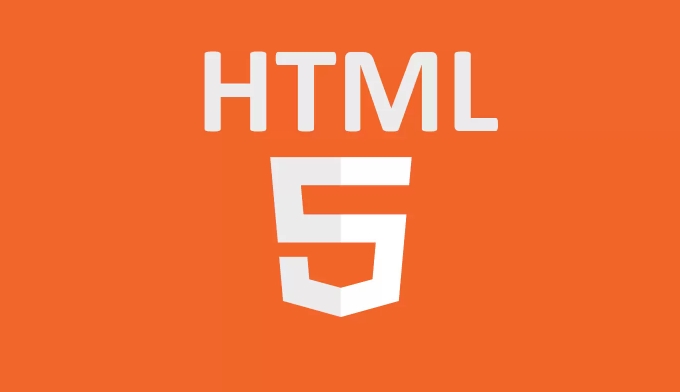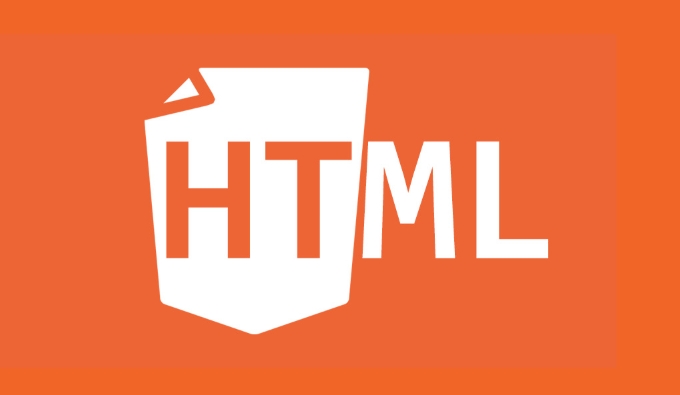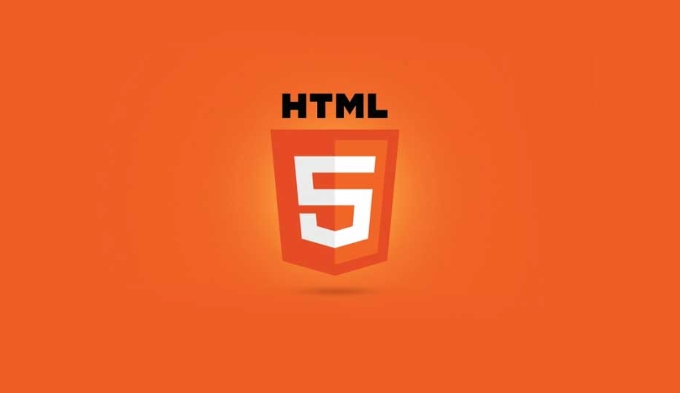OffscreenCanvas allows graphics to be drawn in Web Worker, enabling parallel rendering and reducing main thread pressure. 1. It is a Canvas object provided by HTML5 that does not bind to the DOM, which can be operated in Worker; 2. When using it, the main page obtains OffscreenCanvas through transferControlToOffscreen and passes it to Worker; 3. Use requestAnimationFrame in Worker to realize animation loops and communicate with the main thread through postMessage; 4. Suitable for computationally intensive tasks such as complex animation, image processing, game non-UI layers, etc.; 5. Not suitable for frequent pixel reading and real-time response to user input; 6. Mainstream browsers have good support, but mobile compatibility needs to be paid attention to. Rational use can significantly improve H5 page rendering performance.

H5's OffscreenCanvas does provide a new idea for front-end rendering performance optimization, especially in parallel rendering. It allows us to draw graphically in Web Worker, thereby reducing the pressure on the main thread. This is very useful in scenarios that require a lot of computation and complex animations.

What is OffscreenCanvas?
OffscreenCanvas is a Canvas object provided by HTML5 that can operate in Web Worker. It differs from the normal HTMLCanvasElement in that it does not bind the DOM and does not block the main thread. This means that we can put some complex drawing logic (such as particle systems, image processing, etc.) into the Worker to execute, and release the main thread to do more important things, such as responding to user interaction.
A common way of using it is: create a Canvas element on the main page, obtain the corresponding OffscreenCanvas through the transferControlToOffscreen method, and then pass it to the Worker for operation. Worker can use requestAnimationFrame to make animation loops, or it can pass data back with postMessage.

How to implement parallel rendering with OffscreenCanvas?
To implement parallel rendering, the key is to allocate tasks to the Worker reasonably and keep data synchronized with the main thread. Here is a basic process:
- Create canvas in the main thread and get OffscreenCanvas:
const canvas = document.getElementById('myCanvas');
const offscreen = canvas.transferControlToOffscreen();
const worker = new Worker('renderWorker.js');
worker.postMessage({ canvas: offscreen }, [offscreen]);- Receive and start drawing in Worker:
onmessage = function(e) {
const offscreenCanvas = e.data.canvas;
const ctx = offscreenCanvas.getContext('2d');
function render() {
// Here you can do some complex drawing logic ctx.fillStyle = 'red';
ctx.fillRect(0, 0, 100, 100);
requestAnimationFrame(render);
}
render();
};This enables the independent completion of part of the drawing work in Worker, avoiding the main thread being occupied for a long time.

It should be noted that the API of OffscreenCanvas is almost the same as that of ordinary Canvas, but it will be a little more troublesome to debug because you cannot directly see the content in DevTools. It is recommended to use ordinary Canvas debugging logic in the development stage before migrating to Worker.
Which scenarios are suitable for OffscreenCanvas?
Not all drawing tasks are suitable for OffscreenCanvas. The following scenarios are more suitable:
- Drawing of complex animations or particle systems, especially those that do not require frequent interaction with users.
- Image processing applications, such as filters, synthesis and other computing-intensive tasks.
- Non-UI layer rendering in the game, such as map background, enemy behavior simulation, etc.
The following situations may not be appropriate:
- It is necessary to read pixel data frequently because cross-thread transmission is expensive.
- The UI drawing section that needs to be responsive to user input in real time.
In addition, the current mainstream browsers have good support for OffscreenCanvas, but there may be compatibility issues on some mobile browsers. It is best to test it before going online.
Overall, OffscreenCanvas is an effective means to improve the rendering performance of H5 pages, especially when processing drawing tasks in parallel. As long as you reasonably split the logic and pay attention to thread communication overhead, you can significantly improve page fluency. Basically that's it.
The above is the detailed content of Leveraging H5 OffscreenCanvas for Parallel Rendering. For more information, please follow other related articles on the PHP Chinese website!

Hot AI Tools

Undress AI Tool
Undress images for free

Undresser.AI Undress
AI-powered app for creating realistic nude photos

AI Clothes Remover
Online AI tool for removing clothes from photos.

Clothoff.io
AI clothes remover

Video Face Swap
Swap faces in any video effortlessly with our completely free AI face swap tool!

Hot Article

Hot Tools

Notepad++7.3.1
Easy-to-use and free code editor

SublimeText3 Chinese version
Chinese version, very easy to use

Zend Studio 13.0.1
Powerful PHP integrated development environment

Dreamweaver CS6
Visual web development tools

SublimeText3 Mac version
God-level code editing software (SublimeText3)
 Using ARIA attributes with HTML5 semantic elements for accessibility
Jul 07, 2025 am 02:54 AM
Using ARIA attributes with HTML5 semantic elements for accessibility
Jul 07, 2025 am 02:54 AM
The reason why ARIA and HTML5 semantic tags are needed is that although HTML5 semantic elements have accessibility meanings, ARIA can supplement semantics and enhance auxiliary technology recognition capabilities. For example, when legacy browsers lack support, components without native tags (such as modal boxes), and state updates need to be dynamically updated, ARIA provides finer granular control. HTML5 elements such as nav, main, aside correspond to ARIArole by default, and do not need to be added manually unless the default behavior needs to be overridden. The situations where ARIA should be added include: 1. Supplement the missing status information, such as using aria-expanded to represent the button expansion/collapse status; 2. Add semantic roles to non-semantic tags, such as using div role to implement tabs and match them
 Integrating CSS and JavaScript effectively with HTML5 structure.
Jul 12, 2025 am 03:01 AM
Integrating CSS and JavaScript effectively with HTML5 structure.
Jul 12, 2025 am 03:01 AM
HTML5, CSS and JavaScript should be efficiently combined with semantic tags, reasonable loading order and decoupling design. 1. Use HTML5 semantic tags, such as improving structural clarity and maintainability, which is conducive to SEO and barrier-free access; 2. CSS should be placed in, use external files and split by module to avoid inline styles and delayed loading problems; 3. JavaScript is recommended to be introduced in front, and use defer or async to load asynchronously to avoid blocking rendering; 4. Reduce strong dependence between the three, drive behavior through data-* attributes and class name control status, and improve collaboration efficiency through unified naming specifications. These methods can effectively optimize page performance and collaborate with teams.
 HTML5 video not playing in Chrome
Jul 10, 2025 am 11:20 AM
HTML5 video not playing in Chrome
Jul 10, 2025 am 11:20 AM
Common reasons why HTML5 videos don't play in Chrome include format compatibility, autoplay policy, path or MIME type errors, and browser extension interference. 1. Videos should be given priority to using MP4 (H.264) format, or provide multiple tags to adapt to different browsers; 2. Automatic playback requires adding muted attributes or triggering .play() with JavaScript after user interaction; 3. Check whether the file path is correct and ensure that the server is configured with the correct MIME type. Local testing is recommended to use a development server; 4. Ad blocking plug-in or privacy mode may prevent loading, so you can try to disable the plug-in, replace the traceless window or update the browser version to solve the problem.
 Embedding video content using the HTML5 `` tag.
Jul 07, 2025 am 02:47 AM
Embedding video content using the HTML5 `` tag.
Jul 07, 2025 am 02:47 AM
Embed web videos using HTML5 tags, supports multi-format compatibility, custom controls and responsive design. 1. Basic usage: add tags and set src and controls attributes to realize playback functions; 2. Support multi-formats: introduce different formats such as MP4, WebM, Ogg, etc. through tags to improve browser compatibility; 3. Custom appearance and behavior: hide default controls and implement style adjustment and interactive logic through CSS and JavaScript; 4. Pay attention to details: Set muted and autoplay to achieve automatic playback, use preload to control loading strategies, combine width and max-width to achieve responsive layout, and use add subtitles to enhance accessibility.
 Using HTML5 Semantic Elements for Page Structure
Jul 07, 2025 am 02:53 AM
Using HTML5 Semantic Elements for Page Structure
Jul 07, 2025 am 02:53 AM
Using HTML5 semantic tags can improve web structure clarity, accessibility and SEO effects. 1. Semantic tags such as,,,, and make it easier for the machine to understand the page content; 2. Each tag has a clear purpose: used in the top area, wrap navigation links, include core content, display independent articles, group relevant content, place sidebars, and display bottom information; 3. Avoid abuse when using it, ensure that only one per page, avoid excessive nesting, reasonable use and in blocks. Mastering these key points can make the web page structure more standardized and practical.
 Explaining the HTML5 `` vs `` elements.
Jul 12, 2025 am 03:09 AM
Explaining the HTML5 `` vs `` elements.
Jul 12, 2025 am 03:09 AM
It is a block-level element, suitable for layout; it is an inline element, suitable for wrapping text content. 1. Exclusively occupy a line, width, height and margins can be set, which are often used in structural layout; 2. No line breaks, the size is determined by the content, and is suitable for local text styles or dynamic operations; 3. When choosing, it should be judged based on whether the content needs independent space; 4. It cannot be nested and is not suitable for layout; 5. Priority is given to the use of semantic labels to improve structural clarity and accessibility.
 Accessing User Location with HTML5 Geolocation API
Jul 07, 2025 am 02:49 AM
Accessing User Location with HTML5 Geolocation API
Jul 07, 2025 am 02:49 AM
To obtain user location information, you must first obtain authorization. When using HTML5's GeolocationAPI, the first step is to request user permission. If the user refuses or fails to respond, an error should be handled and a prompt should be given; after successful authorization, the Position object includes coords (latitude, longitude, etc.) and timestamp; you can use watchPosition to monitor location changes, but you need to pay attention to performance issues and clear the listener in time. 1. Authorization requires the user to explicitly allow it to trigger the getCurrentPosition method request; 2. Process error.code when rejected or errored and prompt the user; 3. After success, position.coords provides location data; 4.watc
 Saving the content of an HTML5 canvas as an image.
Jul 08, 2025 am 02:13 AM
Saving the content of an HTML5 canvas as an image.
Jul 08, 2025 am 02:13 AM
Yes, you can save its contents as an image using the HTML5Canvas built-in toDataURL() method. First, call canvas.toDataURL ('image/png') to convert the canvas content to a base64 string in PNG format; if JPEG or WebP format is required, the corresponding type and quality parameters such as canvas.toDataURL ('image/jpeg', 0.8) can be passed in. Then you can achieve download by creating a dynamic link and triggering a click event: 1. Create an element a; 2. Set the download attribute and href as image data; 3. Call the click() method. Note that this operation should be triggered by user interaction.






